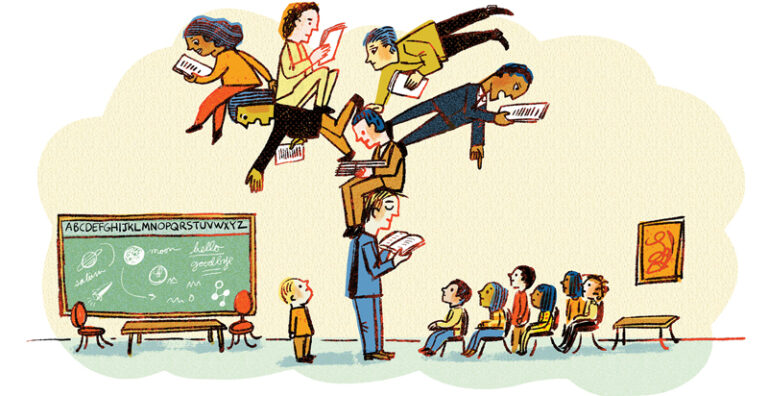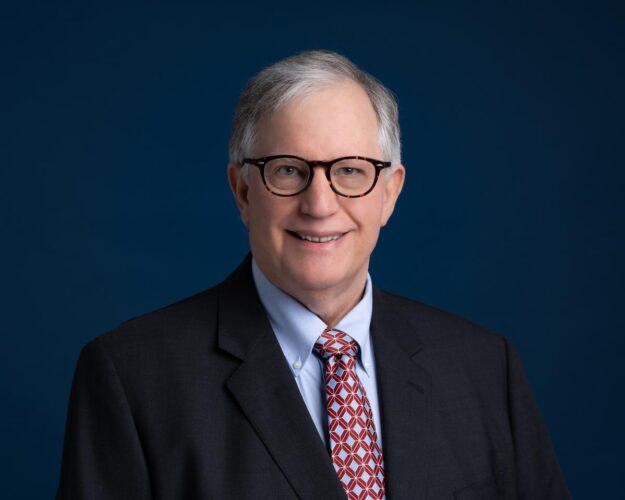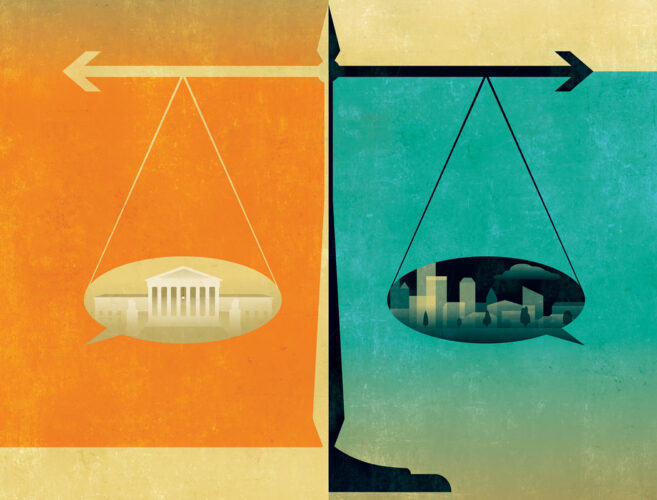Borsuk’s essay and all colleague reactions are available at this link.
Alan Borsuk’s important essay dives deeply into the complexities and challenges of education reform, raising important questions about decades of education policymaking. This topic—how classroom instruction can be improved through policy—resonates deeply with me. I have long been deeply sympathetic to the education-reform impulse, while tending to view with some skepticism its underlying assumptions and remedies. Teaching and learning mostly occur in publicly funded schools and within a policy context. But it doesn’t follow that policymaking is the most effective lever to improve student outcomes. To be truly successful, education reform must transition from a policy-centric movement to one firmly grounded in making changes in classroom practice.
It is hard not to agree with Borsuk’s observation that No Child Left Behind (NCLB) was “one of the most important and telling examples of overreach by politicians,” requiring by law that every child in the United States read and do math on grade level within 12 years of its passage. But it is important to learn the right lessons from such wild and even cartoonish policy initiatives. Broadly speaking, the education-reform policy playbook has operated for decades, at least tacitly, on the assumption that schools and teachers understand effective practice and are capable of delivering it—they just need to be properly incentivized and “held accountable.” This is not only naive but cynical. It suggests that our classrooms are staffed by men and women who are willing do their jobs effectively, if only we would make it worth their while, or threaten their livelihoods.
The rapidly emerging school-choice movement, incidentally, is at risk of making a similar mistake, assuming that competitive effects alone or freeing teachers from bureaucratic and union constraints will unleash untapped dynamism and drive better outcomes. In fact, if the fundamental problem lies in basic competence—in not the delivery mechanism but the education product—changing the roof under which instruction occurs will do little.
Consider an analogy: Imagine that decades of policymaking were aimed not at improving public education but at fixing the Ford Edsel, one of the most infamous failures in American business history. Legislators, aided by researchers and think-tankers, would analyze which auto plants were producing the best-selling Edsels, reward the employees, and encourage them to open more plants. Factories whose vehicles sold poorly would be placed under state supervision and put on improvement plans. Policymakers would introduce merit pay or argue for higher salaries to attract better, more-talented assembly line workers. Ambitious and innovative lawmakers might even be persuaded to view the problem as the factory itself or the unionized workforce. They would encourage the development of small, agile, union-free auto shops and grant them charters . . . to build more Edsels.
Borsuk tacitly acknowledges the limits of policymaking in his discussion of reading reforms and the current “science of reading” movement. He notes that this wave of reform “will be a major, even crucial test of whether top-down initiatives can work.” While I am a strong proponent of these practice-based reforms, I share his concerns—not as a test of policy potency but as a test of implementation. He cites Emily Hanford’s and Mark Seidenberg’s various work, which has resonated with teachers in recent years and led a dramatic rethinking in how we teach reading. Both wisely counsel not to expect too much too soon; changes in classroom practice happen gradually—and not because policymakers demand it. As my American Enterprise Institute colleague Rick Hess has pointed out, it’s easy to make people do things; it’s much harder to make them do those things well.
In sum, the issue is not that there are no solutions. The challenge lies in the fact that we cannot legislate or assume competence. While there is certainly ample room for more modesty in our aims and expectations, sustainable improvement in education requires a focus on the practical, everyday realities of teaching and learning, coupled with policies that support and enhance these practices rather than simply mandate them.
The energy, commitment, and moral clarity characterizing the NCLB era of education reform were commendable. That the results have often been disappointing should prompt us to reconsider our approach. What if, instead of exclusively pulling policy levers, we redirected the reform movement’s energy and enthusiasm toward improving classroom practice? Such a shift could yield more substantial and lasting improvements in educational outcomes.
Illustrations by Robert Neubecker

Robert Pondiscio is a senior fellow at the American Enterprise Institute, where he focuses on K–12 education. His books include How the Other Half Learns: Equality, Excellence, and the Battle over School Choice.




